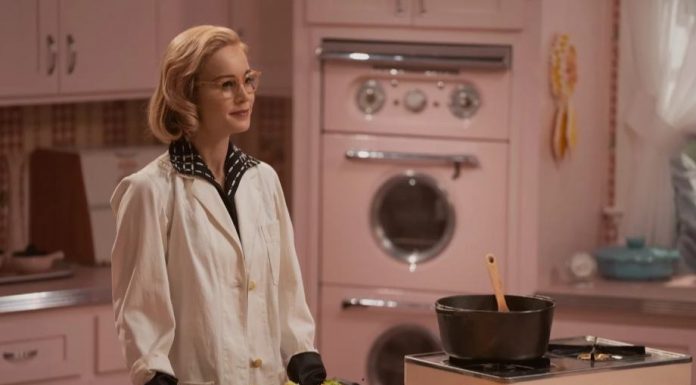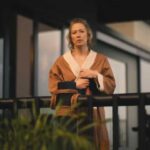Real-life experience-based stories in television and entertainment frequently capture our attention and grab our emotions. The fascinating storyline of the Apple TV+ series “Lessons in Chemistry” set in the 1950s has created a lot of excitement. The protagonist of the episode is Elizabeth Zott played by Brie Larson, a woman who wants to be a scientist but ends up hosting a cookery show because of the social mores of the time that discouraged women in science.
This change not only transforms her personal life but also enables her to impart knowledge on more than just recipes to a country of frequently disregarded housewives and even men who begin to pay attention. She experiences several dramatic turns and turns as she rises to popularity in the culinary world. Brie Larson’s performance as Elizabeth Zott in “Lessons in Chemistry” shows evidence of her talent and adaptability as an actor.
Many people are now asking if Elizabeth Zott from “Lessons in Chemistry” is based on a real person. tvacute will delve into the universe developed by Lee Eisenberg’s “Lessons in Chemistry,” examining the background, the show’s historical significance, and the beginnings of its endearing cast of characters.
Is Elizabeth Zott from “Lessons in Chemistry” Based on a Real Person?
The character from “Lessons in Chemistry,” Elizabeth Zott, is not based on a real person. Recognizing the series’ beginnings is crucial to solving this puzzle. The same-titled historical fiction book by Bonnie Garmus served as the basis for the television series. Though the author created Elizabeth Zott as a tribute to her mother’s generation, several features of the story—such as the difficulties women faced in fields dominated by men—have their roots in historical events.
But in terms of Elizabeth Zott’s persona, Garmus makes it very evident that she is not a literal incarnation of any one historical figure. Rather, Elizabeth was designed as an homage to Garmus’s mother and the whole generation of women who had their goals suppressed by a culture that thought they could never be anything more than “ordinary housewives.”
In a CBS interview, Garmus related the tale of her mother, who in the 1960s—a time period that corresponds with the events of the book and the film adaptation—went from being a nurse to a housewife. Elizabeth Zott was motivated by Garmus’s mother’s experiences and her desire for the career she left behind. Garmus’s mother went back to work once her children grew up, renewing her nursing license and even taking home the coveted title of “nurse of the year,” even though she had been out of the workforce for years. She demonstrated the breadth of her unrealized ability by becoming an expert seamstress as well.
Although Elizabeth must overcome many challenges to become a well-known chemist, Garmus has a deeper relationship with the character than just inspiration. Garmus had her own set of obstacles on her path to becoming a great novelist. The remarkable 98 times her first book was rejected before “Lessons in Chemistry” became a best-seller. The tale of Garmus and Elizabeth Zott serves to emphasize the unbreakable strength of tenacity. Both experienced a great deal of rejection and social barriers, but they refused to let those things dictate how they would live.
Viewers embark on an exhilarating journey through the life of Elizabeth Zott in “Lessons in Chemistry,” a character created out of respect for the author’s mother and a generation of women in general. Elizabeth is not a straight portrayal of any one historical figure, even if her character is influenced by the goals and experiences of many women in her day. The power of historical fiction to combine imagination and truth to create tales that profoundly relate to our own problems and lives is what makes it so beautiful.
Is ‘Lessons in Chemistry’ From Apple TV Based on a True Story?







